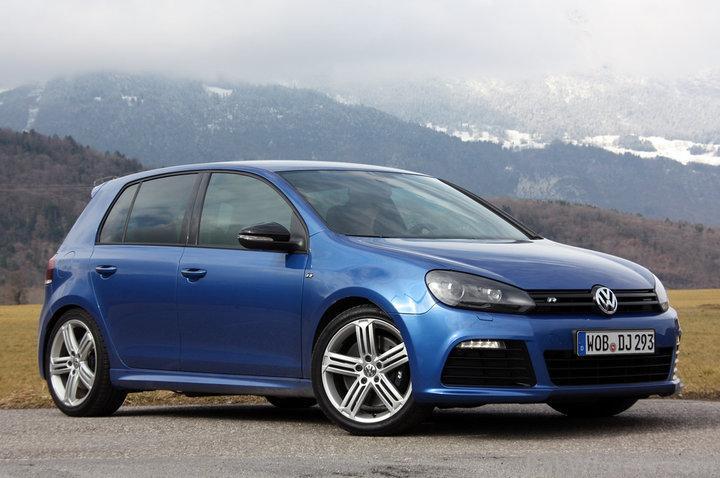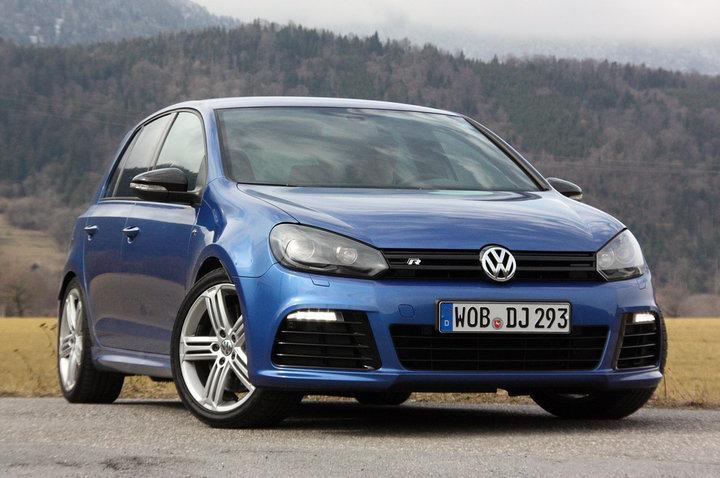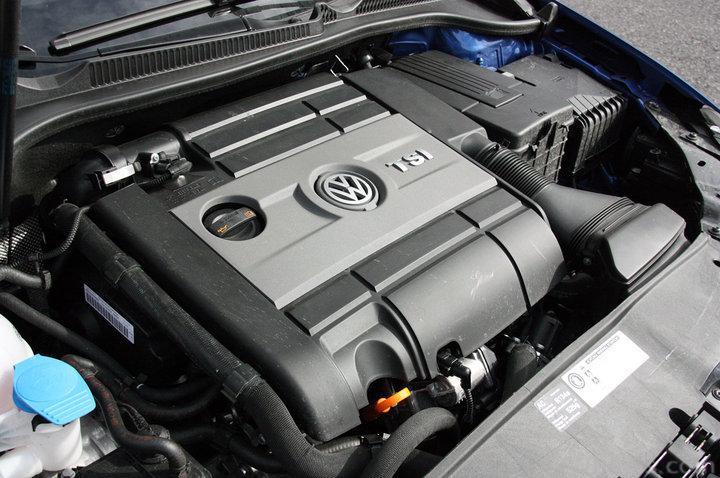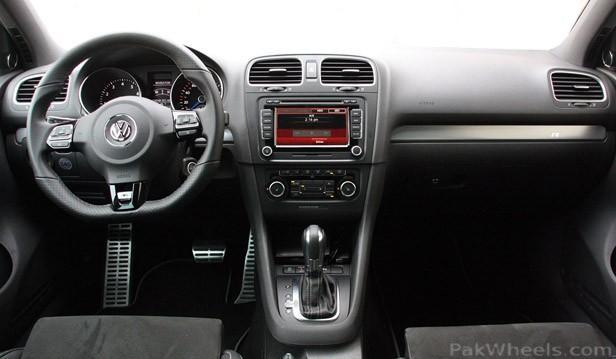We're slumming through traffic in downtown Geneva, Switzerland, making our way towards the French border where we're about to spend a few hours flogging the 2012 Volkswagen Golf R along the twisty, narrow roads of the Alps. Right now, we're focused on the Golf's comfortable, well-appointed interior, and how its good visibility and relatively small stature make it a pleasant drive through heavy city traffic. It's just like every other GTI – or Golf, for that matter – in this regard. But as soon as we approach the entrance to highway A40, we find out exactly what that R badge is for.
We speed towards the sharp, right-hand on-ramp with a furious growl coming from the turbocharged 2.0-liter inline four-cylinder engine, and as we throw the wheel to the right, the Golf R hunkers down, digs its claws into the pavement, clips the apex of the ramp and sends us blasting onto the A40 with tremendous force.
"A GTI would have fallen all over itself right there," our co-driver states, matter-of-factly. He's right, too. Even with Volkswagen's nifty new XDS active differential, the GTI is prone to understeer when coming into a turn at high speed, and there's a decent amount of torque steer that makes the exit a bit more skittish than you'd prefer. But in the Golf R, with its fourth-generation 4Motion all-wheel-drive system and more powerful engine, every step of the high-speed cornering dance is executed perfectly.
You can imagine, then, that the rest of our drive through the French Alps was nothing short of bliss. The Golf R is Volkswagen's new poster child for hot hatchery, and if you've ever fallen in love with a GTI, be prepared to be absolutely smitten with this little number.
In addition to the lack of a dual-clutch option, the U.S.-spec Golf R will also be slightly down on power versus its European counterpart. Unlike the six-cylinder R32 from a few years ago, the Golf R uses Volkswagen's 2.0-liter turbocharged inline four-cylinder engine, which in Europe cranks out 270 horsepower and 258 pound-feet of torque. Official U.S. power numbers haven't been released as of this writing, but Volkswagen tells us that the Stateside hatch will produce something closer to 256 hp and 243 lb-ft – losses of 14 and 15, respectively. These aren't huge decreases by any means, but it'll be noticeable in a car that only weighs roughly 3,300 pounds. Even with the diminished power, we're told that the Golf R will run to 62 miles per hour in just under six seconds – 5.7 or 5.8, based on the automaker's estimates. Not bad at all.
Regardless of exactly how much power the 2.0T is producing, the fact that it's mated to Volkswagen's 4Motion all-wheel-drive system makes everything acceptable in the long run. This fourth-generation Haldex system no longer needs to sense slip in the front wheels to engage the rear, and we're told that in extreme driving conditions, it's actually possible to send over 90 percent of the engine's power to the rear rollers. Not that you'll be power-sliding a Golf R or anything.
During highway cruising, the 4Motion system only sends power to the front wheels (it's better for fuel economy), but the all-wheel drive is so quick to chime in, you have added traction out back at the blink of an eye. The system isn't intrusive, and the traction control makes sure things are kept in line at all times. In fact, like the GTI, there's no way to fully deactivate TC. European cars can be had with a traditional summer tire package, but in the States, you'll only be able to get all-seasons from the factory – 255/40-series rubber at all four corners. Our tester was fitted with a set of ContiWinterContact foul-weather tires, and while there wasn't any real lack of grip during hard cornering, we're sure that stickier summer tires would be a great improvement.
Bringing things to a halt are an upgraded set of R-badged brakes – far better units than what we have on the GTI currently. We did a few hard brake tests from 60 mph, and instead of getting all willy-nilly, the R bites down and comes to a quick stop. There's no front end chatter – even on the winter rubber of our tester – and no noticeable aggravation to the steering wheel. Overall braking feel is confident, and we're glad that these more robust stoppers are part of the Golf R package.
The biggest testament to the Golf R's better dynamics is the substantial weight savings found by using the 2.0-liter four instead of a naturally aspirated V6 hanging over the front axle. The R is approximately 250 pounds lighter than the old R32, with most of the lightness added to the front end. This, combined with the fourth-generation 4Motion means there's no tendency for the car to plow into a turn, even with a 60:40 fore-to-aft weight distribution. Likewise, there's no noticeable torque steer during takeoff or while exiting a turn. There is, however, quite a bit of turbo lag, especially during hard stomps of the accelerator at speed. Slam the right pedal while doing 50 mph, count to three, and then feel the rush. Still, the turbocharged push is more engaging than the old V6, especially when scaling the side of a mountain. You don't need to wind this engine up to its peak to get the maximum amount of oomph at all four wheels.
We were originally quick to gripe about the fact that Volkswagen will also not be offering the Euro-spec adjustable suspension in the U.S., but after playing with it during our drive route through the Alps, we aren't nearly as upset. In its standard setting, the ride quality is still firm without being overly harsh, and the steering is light and tossable while still feeling very connected, even on-center. We tested out the 'Sport' setting, and while the suspension dampening is improved for instances of canyon carving, the additional weight it adds to the steering is really quite unpleasant. One of our favorite parts about the Golf R is its flickable steering, and while the improved suspension geometry of 'Sport' is indeed appreciated, we wouldn't sacrifice the outstanding feel from the wheel for it. Even when left in its normal setting, the suspension still allowed the R to hug the curves of our hilly test route with great poise, never exerting any significant body roll through the tight corners.




